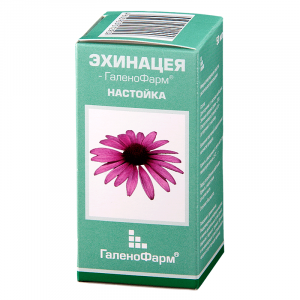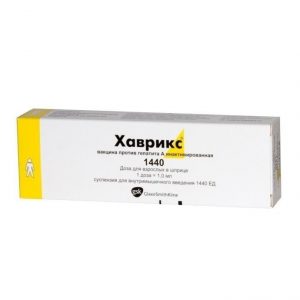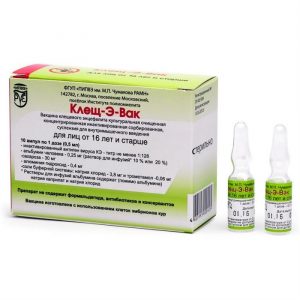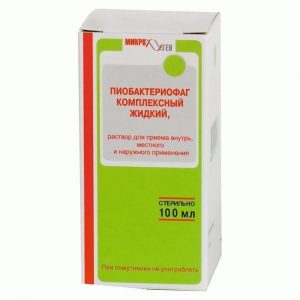Description
Release form
solution for intramuscular injection
Packing
intramuscular injection 1.5 ml / dose ampoule 1.5 ml with an ampoule knife, pack of cardboard 10.
¤ °Ñ ¼ ° º ¾ » ¾ ³ ¸Ñ Ñ º ¾ ´ ¹ÑÑ ² ¸
Ñ »Ñ ± ºÑ – ¿Ñ ¾Ñ ¸ ² ¾Ñ · ² ½ ½ ¾ .
¤ °Ñ ¼ ° º ¾ ´ ¸ ½ ° ¼ ¸ º °
° ± ¿Ñ ° · ¾ » ¿Ñ ¸ ½ ° ´ » ¶ ¸Ñ º º » °ÑÑÑ ° ½Ñ ¸Ñ ºÑ Ñ ¾Ñ ½ Ñ ¿Ñ ¿ °Ñ °Ñ ¾ ², · ° ¼ Ñ ½ ½ Ñ ± ½ · ¸ ¼ ¸ ´ ° · ¾ » ¾ ², º ¾Ñ ¾Ñ ½ ¾ ± » ° ´ °ÑÑ Ñ ¾ » ¸ ½ ¾ » ¸Ñ ¸Ñ Ñ º ¸ ¼ ¸ ¸ » ¸ ° ½Ñ ¸ ³ ¸ÑÑ ° ¼ ¸ ½ ½ ¼ ¸ ( 2) Ñ ² ¾ ¹ÑÑ ² ° ¼ ¸, ° ¿ ¾ ´ ° ² »ÑÑÑ ¶ »Ñ ´ ¾Ñ ½ÑÑ Ñ ºÑ Ñ ¸Ñ ¿ÑÑ ¼ ¸ ½ ³ ¸ ± ¸Ñ ¾ ² ° ½ ¸Ñ Ñ Ñ ¼ ½Ñ ° +/ +- ¢ ¤ ° · ( ¿Ñ ¾Ñ ¾ ½ ½ ¾ ¹ ¿ ¾ ¼ ¿ ). ÑÑ ºÑ ¿Ñ ¿ °Ñ °Ñ ° · ° ² ¸Ñ ¸Ñ ¾Ñ ´ ¾ · ¸ ¿Ñ ¸ ² ¾ ´ ¸Ñ º ¿ ¾ ´ ° ² » ½ ¸Ñ ± ° · ° »Ñ ½ ¾ ¹ ¸ ÑÑ ¸ ¼Ñ » ¸Ñ ¾ ² ° ½ ½ ¾ ¹ Ñ ºÑ Ñ ¸ ¸ Ñ ¾ »Ñ ½ ¾ ¹ º ¸Ñ » ¾Ñ ² ¶ »Ñ ´ º , ½ · ° ² ¸Ñ ¸ ¼ ¾ ¾Ñ ÑÑ ¸ ¼Ñ » ¸Ñ ÑÑÑ ¸Ñ Ñ ° ºÑ ¾Ñ ¾ ². ÑÑ » ´ ¾ ² ° ½ ¸Ñ ½ ° ¶ ¸ ² ¾Ñ ½ Ñ ¿ ¾ º ° · ° » ¸, ÑÑ ¾ Ñ ° ± ¿Ñ ° · ¾ » ± ÑÑ Ñ ¾ ¸ÑÑ · ° Ñ ¸ · ¿ » ° · ¼ ¸ Ñ » ¸ · ¸ÑÑ ¾ ¹ ¾ ± ¾ » ¾Ñ º ¸ ¶ »Ñ ´ º °. Ñ ´ÑÑ ¸ Ñ » ° ± ¼ ¾Ñ ½ ¾ ² ° ½ ¸ ¼, Ñ ° ± ¿Ñ ° · ¾ » ± ÑÑ Ñ ¾ ²Ñ °Ñ ² ° Ñ ÑÑ ² ¾ ²Ñ Ñ ´ ¾ · ¸Ñ ¾ ² º °Ñ ¸ ½ ° º ° ¿ » ¸ ² ° Ñ ÑÑ ² º ¸Ñ » ¾ ¹ ÑÑ ´ ¿ °Ñ ¸ Ñ ° »Ñ ½ Ñ º » Ñ ¾ º ¶ »Ñ ´ º °. ° ± ¿Ñ ° · ¾ » º ¾ ½ ² Ñ Ñ ¸Ñ Ñ Ñ ÑÑ ² ÑÑ »ÑÑ ½ ° ¼ ¸ ´ ½ÑÑ Ñ ¾Ñ ¼Ñ ¿ÑÑ ¼ ¿Ñ ¾Ñ ¾ ½ ¸ · °Ñ ¸ ¸ ¸ ¿ ¾Ñ ¾ ¼ ² · ° ¸ ¼ ¾ ´ ¹ÑÑ ²Ñ Ñ Ñ ´ ¾ÑÑ Ñ ¿ ½ ¼ ¸ ¼ ¾ » ºÑ » ° ¼ ¸ Ñ ¸ÑÑ ¸ ½ ° ¿Ñ ¾Ñ ¾ ½ ½ ¾ ¹ ¿ ¾ ¼ ¿ .
½Ñ ¸Ñ ºÑ Ñ ¾Ñ ½ ¾ ´ ¹ÑÑ ² ¸ : ¿ ¾Ñ » ¿Ñ ¸ ¼ ° ² ½ÑÑ Ñ Ñ 20 ¼ ³ Ñ ° ± ¿Ñ ° · ¾ » ° ° ½Ñ ¸Ñ ºÑ Ñ ¾Ñ ½ ¹ ÑÑÑ ºÑ ½ °Ñ ¸ ½ ° Ñ Ñ ° · ² ¸ ² °Ñ ÑÑÑ ² Ñ Ñ ½ ¸ 1 Ñ, ´ ¾ÑÑ ¸ ³ °Ñ ¼ ° ºÑ ¸ ¼Ñ ¼ ° Ñ Ñ · 2 4 Ñ. ¾ ´ ° ² » ½ ¸ ± ° · ° »Ñ ½ ¾ ¹ ¸ ÑÑ ¸ ¼Ñ » ¸Ñ ¾ ² ° ½ ½ ¾ ¹ ¿ ¸Ñ ¹ Ñ ºÑ Ñ ¸ ¸ Ñ ¾ »Ñ ½ ¾ ¹ º ¸Ñ » ¾Ñ ² ¶ »Ñ ´ º Ñ Ñ · 23 Ñ ¿ ¾Ñ » ¿Ñ ¸ ¼ ° ¿ Ñ ² ¾ ¹ ´ ¾ · Ñ ° ± ¿Ñ ° · ¾ » ° Ñ ¾ÑÑ ° ² »Ñ Ñ 69% ¸ 82%, Ñ ¾ ¾Ñ ² Ñ ÑÑ ² ½ ½ ¾, ¸ ´ » ¸Ñ ÑÑ ´ ¾ 48 Ñ. ½ ³ ¸ ± ¸Ñ ÑÑÑ ¸ ¹ ÑÑÑ ºÑ Ñ ° ± ¿Ñ ° · ¾ » ° ² ¾Ñ ½ ¾Ñ ½ ¸ ¸ Ñ ºÑ Ñ ¸ ¸ Ñ ¾ »Ñ ½ ¾ ¹ º ¸Ñ » ¾Ñ ¿Ñ ¸ ¿Ñ ¸ ¼ ¿ ¾ ²Ñ ¾Ñ ½ Ñ ´ ¾ · ½ Ñ º ¾ »Ñ º ¾ Ñ ² » ¸Ñ ¸ ² ° Ñ ÑÑ, ´ ¾ÑÑ ¸ ³ °Ñ Ñ ° ² ½ ¾ ² Ñ ½ ¾ ³ ¾ Ñ ¾ÑÑ ¾Ñ ½ ¸Ñ Ñ Ñ · 3 ´ ½Ñ. ¾Ñ » ¾Ñ ¼ ½ ¿Ñ ¿ °Ñ °Ñ ° Ñ ºÑ Ñ ¾Ñ ½ °Ñ ° ºÑ ¸ ² ½ ¾ÑÑ Ñ ¶ »Ñ ´ º ° ² ¾ÑÑÑ ° ½ ° ² » ¸ ² ° Ñ ÑÑ Ñ Ñ · 2 3 ´ ½Ñ.
In vitro ± » ¾ ÑÑÑ ° ½ ¾ ² » ½ ¾, ÑÑ ¾ Ñ ° ± ¿Ñ ° · ¾ » ¾ º ° · ² ° Ñ ± ° ºÑ Ñ ¸Ñ ¸ ´ ½ ¹ ÑÑÑ ºÑ ½ ° Helicobacter pylori. Ñ ° ´ ¸ º °Ñ ¸Ñ H.pylori Ñ ° ± ¿Ñ ° · ¾ » ¾ ¼ ¸ ° ½Ñ ¸ ¼ ¸ ºÑ ¾ ± ½ ¼ ¸ ¿Ñ ¿ °Ñ °Ñ ° ¼ ¸ ¿Ñ ¸ ² ¾ ´ ¸Ñ º ² Ñ ¾ º ¾ ¹ ÑÑ ¿ ½ ¸ · ° ¶ ¸ ² » ½ ¸Ñ ¿ ¾Ñ ° ¶ ½ ¸ ¹ Ñ » ¸ · ¸ÑÑ ¾ ¹ ¾ ± ¾ » ¾Ñ º ¸. ¾ Ñ ·Ñ »ÑÑ °Ñ ° ¼ º » ¸ ½ ¸Ñ Ñ º ¸Ñ ¸ÑÑ » ´ ¾ ² ° ½ ¸ ¹ ÑÑÑ ° ½ ¾ ² » ½ ¾, ÑÑ ¾ ¿Ñ ¸ ¼ 20 ¼ ³ Ñ ° ± ¿Ñ ° · ¾ » ° 2 Ñ ° · ° ² ´ ½Ñ ² º ¾ ¼ ± ¸ ½ °Ñ ¸ ¸ Ñ ´ ²Ñ ¼Ñ ° ½Ñ ¸ ± ¸ ¾Ñ ¸ º ° ¼ ¸, ½ ° ¿Ñ ¸ ¼ Ñ º » °Ñ ¸Ñ Ñ ¾ ¼ ¸Ñ ¸ ½ ¾ ¼ ¸ ° ¼ ¾ ºÑ ¸Ñ ¸ » » ¸ ½ ¾ ¼ ¸ » ¸ º » °Ñ ¸Ñ Ñ ¾ ¼ ¸Ñ ¸ ½ ¾ ¼ ¸ ¼ Ñ Ñ ¾ ½ ¸ ´ ° · ¾ » ¾ ¼ ² Ñ Ñ ½ ¸ 1 ½ ´ ¿ ¾ · ² ¾ »Ñ Ñ ´ ¾ÑÑ ¸ÑÑ ÑÑ ¾ ² ½Ñ ÑÑ ° ´ ¸ º °Ñ ¸ ¸ H. pylori ± ¾ » 80% Ñ ¿ °Ñ ¸ ½Ñ ¾ ² Ñ ³ °ÑÑ Ñ ¾ ´Ñ ¾ ´ ½ ° »Ñ ½ ¼ ¸ Ñ · ² ° ¼ ¸. Ñ ¸ ² ± ¾Ñ ¿ ¾ ´Ñ ¾ ´ÑÑ ¹ º ¾ ¼ ± ¸ ½ °Ñ ¸ ¸ ´ »Ñ ÑÑ ° ´ ¸ º °Ñ ¸ ¸ H. pylori Ñ » ´Ñ Ñ Ñ Ñ º ¾ ² ¾ ´ÑÑ ² ¾ ² °Ñ ÑÑÑ ÑÑ ² Ñ ¶ ´ ½ ½ ¼ ¸ ÑÑ ° ½ ´ °Ñ Ñ ° ¼ ¸ » Ñ ½ ¸Ñ. £ ¿ °Ñ ¸ ½Ñ ¾ ² Ñ ¿ Ñ Ñ ¸ÑÑ ¸Ñ ÑÑÑ ¹ ¸ ½Ñ ºÑ ¸ ¹ ( ¿Ñ ¸ ½ ° » ¸Ñ ¸ ¸ ¿ Ñ ² ¾ ½ °Ñ ° »Ñ ½ ¾ ÑÑ ²ÑÑ ² ¸Ñ »Ñ ½ Ñ ÑÑ ° ¼ ¼ ¾ ² ¼ ¸ ºÑ ¾ ¾Ñ ³ ° ½ ¸ · ¼ ¾ ²) ½ ¾ ±Ñ ¾ ´ ¸ ¼ ¾ ÑÑ ¸Ñ ² °Ñ Ñ ² ¾ · ¼ ¾ ¶ ½ ¾ÑÑ Ñ Ñ ° · ² ¸Ñ ¾ Ñ ·Ñ »ÑÑ °Ñ ° ¼ º » ¸ ½ ¸Ñ Ñ º ¸Ñ ¸ÑÑ » ´ ¾ ² ° ½ ¸ ¹ ÑÑÑ ° ½ ¾ ² » ½ ¾, ÑÑ ¾ ¿Ñ ¸ ¼ 20 ¼ ³ Ñ ° ± ¿Ñ ° · ¾ » ° 2 Ñ ° · ° ² ´ ½Ñ ² º ¾ ¼ ± ¸ ½ °Ñ ¸ ¸ Ñ ´ ²Ñ ¼Ñ °
Restores the functions of lymphocytes under conditions of immunosuppression, increases blastogenesis in the population of monocytic cells, stimulates the expression of membrane receptors on the surface of T-helpers, prevents the decrease in the activity of lymphocyte cells under the influence of glucocorticosteroids, normalizes the incorporation of thymidine into them.
Isoprinosine has a stimulating effect on the activity of cytotoxic T-lymphocytes and natural killers, the function of T-suppressors and T-helpers, increases the production of immunoglobulin (lg) G, interferon-gamma, interleukins (IL) -1 and IL-2, reduces the formation of pro-inflammatory cytokines – IL-4 and IL-10, potentiates chemotaxis of neutrophils, monocytes and macrophages.
The drug exhibits in vivo antiviral activity against viruses:
Herpes simplex.
Cytomegalovirus.
Measles virus.aboutC from the blood plasma of healthy donors. For
fractionation, a plasma mixture of at least 1000 donors is used.
Indications
The drug is used without age restrictions:
as part of complex therapy for the treatment of severe toxic forms of bacterial and viral infections
as part of complex therapy of postoperative complications accompanied by septicemia
Replacement therapy.
in primary (congenital agammaglobulinemia and hypogammaglobulinemia)
immunodeficiency in secondary immunodeficiency in patients with myeloma and chronic lymphocytic leukemia with recurrent
infections in congenital HIV infections with recurrent infections in children.
Contraindications
hypersensitivity to human immunoglobulin, especially in rare cases of blood deficiency of class A immunoglobulin (IgA) and the presence of antibodies against IgA
hypersensitivity to the components of the drug
history of allergic reactions to blood products.
In cases of severe sepsis, the only contraindication for administration is a history of anaphylactic shock on blood products.
Use during pregnancy and lactation
Caution during pregnancy and lactation.
Composition
Active ingredient:
immunoglobulin Glp 1.25 g substances: maltose monohydrate – 0.35 g
dextrose monohydrate – 0.35 g
glycine – 0.20 g
The drug does not contain preservatives or antibiotics.
Dosage and administration of
Diluted immunoglobulin is administered at a rate of 8-10 drops per minute (faster administration may cause a collaptoid reaction). Infusions are carried out daily for 3-5 days.
For adults, a single dose of the drug is 1.25 – 2.5 g (25 – 50 ml). Dissolved Immunovenin ® (without additional dilution) is administered at a rate of 30-40 drops per minute (faster administration can cause the development of a collaptoid reaction). The course of treatment consists of 3-10 infusions, conducted after 24-72 hours (depending on the severity of the disease).
Replacement therapy for primary immunodeficiencies: a single dose is 0.4 – 0.8 g (8 – 16 ml) per kg of body weight once. The introduction is repeated every 2 to 4 weeks at a dose of 0.2 – 0.8 g (4 – 16 ml) per kg of body weight to maintain the IgG titer in plasma at a level of 4 – 6 g / L.
Plasma IgG should be monitored to determine the optimal dose and interval between doses.
Replacement therapy for secondary immunodeficiencies in patients with myeloma and chronic lymphocytic leukemia with recurrent infections. Replacement therapy in children with congenital HIV infection with recurrent infections: the dose is 0.2 – 0.4 g (4 – 8 ml) per kg body weight . The introduction is repeated after 3 to 4 weeks to maintain the IgG titer in plasma at a level of 4 to 6 g / l. To determine the optimal dose and interval between administrations, the level of IgG in the plasma should be monitored.
Immunovenin ® is used only in a hospital, subject to all aseptic rules. The drug and solvent are not suitable for use in bottles with impaired integrity, labeling, as well as when the color of the drug and solvent changes, when the transparency of the solvent changes, if the expiration date has expired, or if it is stored incorrectly. Before administration, the vials are kept at a temperature of (20 ± 2) ° C for at least 2 hours. The drug should be completely dissolved within 10 minutes in the amount of the supplied solvent
Side effects
The development of adverse reactions depends on the size of the dose and the rate of administration of the drug.
According to numerous studies of immunoglobulin preparations for intravenous administration, the following side effects are possible:
flu-like syndrome: chills, headache,
hyperthermia from the digestive system: nausea, vascular
vomiting from the cardiovascular system: low blood pressure, rarely collapse.
In isolated cases, the development of reversible aseptic meningitis, transient hemolytic anemia, hemolysis, acute renal failure and hypercreatinemia is possible. Since there is evidence that the administration of a high dose of immunoglobulin leads to a relative increase in blood viscosity, there is a relationship between the intravenous administration of immunoglobulins and the phenomena of thromboembolism, such as myocardial infarction, stroke, pulmonary embolism and deep vein thrombosis, especially at risk.
Individuals with altered reactivity may develop allergic reactions of various types, and in extremely rare cases, anaphylactic shock, and therefore, those who receive the drug should be under medical supervision for an hour.
Anti-shock therapy should be available in the room where the drug is administered.
Drug Interaction
The drug can be used in complex therapy of the disease in combination with other drugs. It is not allowed to mix the drug with other drugs, always use a separate infusion system for administration.
May reduce the effectiveness of active immunization: live vaccines (measles, mumps, rubella, varicella) are administered no earlier than 3 months after immunoglobulin administration.
Storage Conditions
The drug is stored and transported at 2 to 8 ° C. Freezing is not allowed.
Shelf life
1 year
Deystvuyushtee substance
Immunoglobulin per person normalyn y
Dosage form
infusion solution
Possible product names
Human immunoglobulin normal ampoules, 1 dose, 1.5 ml, 10 pcs.
Microgen NGO26, Russia Oia




